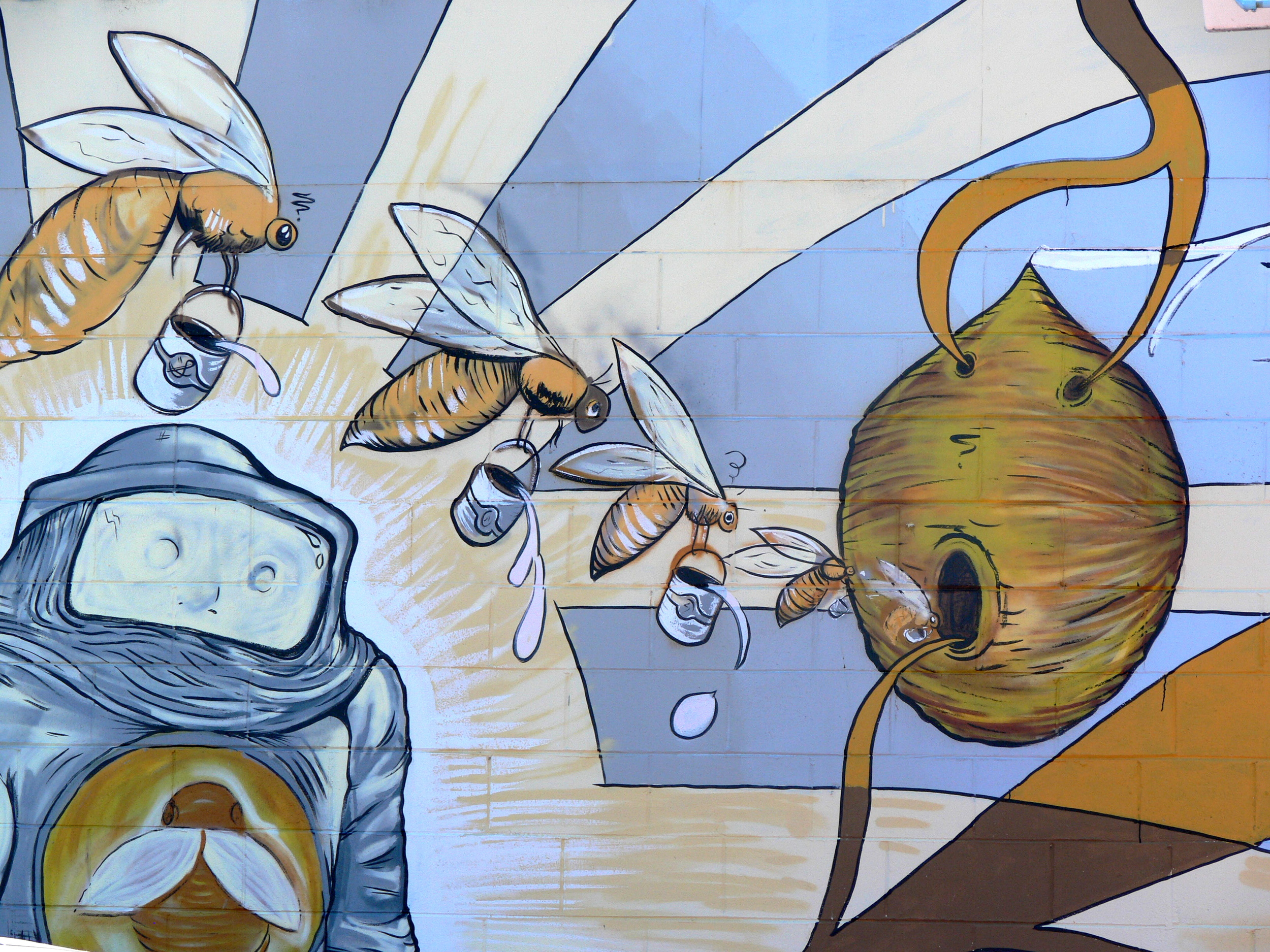For love of the Honeybee (and the Monkey...)
I’m a big fan of bees. I think we all should be. They pollinate so many of our fine foods; blueberries, onions, coconuts, cucumbers & cashews would not grace our tables if it weren’t for these amazing little creatures.
And then of course there is honey. Sweet and silky, golden and rich. Before apiary, or beekeeping, came into existence honey was rare and prized, a luxury of the wealthy, a celebration food.
Honey production goes a little like this: bees feast on flowers and collect nectar in their mouths. The nectar mixes with enzymes in their saliva, and voila: honey. Well almost. The final magic touch happens back at the hive, when the bees flutter their wings over the nectar enzyme cocktail reducing the moisture content in the mixture. Who knew wings weren’t just for flying?
I don’t think anyone can argue with the notion that honey is holy; we have accounts of honey in nearly every religion. In Hinduism, honey or madhu, is known to be one the five elixirs of immortality. It is considered a sattvic food in Ayurveda and has a long history of being revered. During Rosh Hashanah, Jews dip apples in honey to mark the New Year, while John the Baptist is said to have lived in the wild for quite some time on the unique combination of locusts and honey. (Brooklyn dinner party anyone?)
But by far my favorite ritual that involves honey is the Buddhist festival of Madhu Purhima. During this festival monks are given honey to commemorate the story of Buddha’s peace making retreat to the wilderness, where a monkey, kind soul that he was, brought the fasting Buddha, yes you guessed it, honey.
Now why might a monkey bring a fasting Buddha honey? Good question. I’ll be so bold as to offer up a few ideas.
Perhaps monkeys were privy to the fact that raw honey is antibacterial, antiviral, antifungal and antioxidant, that it contains a large amount of friendly bacteria and is thus, a powerhouse for the immune system.
Perhaps knowing the mechanics of fasting the monkey wanted to help the Buddha with his blood sugar. Ancient Olympians were said to eat honey and figs to help with endurance. Recent research has shown that honey consumed during or before training can indeed help an athlete’s performance by maintaining optimal blood sugar levels. The simple sugars in honey are released gradually into the bloodstream, which provides prolonged and sustained energy. Consumption of refined white sugar on the other hand (and it’s even more evil twin high fructose corn syrup) gives a quick high followed by a quick crash that leaves you tired and craving more sugar.
And then there’s always the chance the Buddha could’ve gotten a little rambunctious and busted his knee. Ok probably unlikely, but in the event he did honey could’ve come to his rescue. Honey possesses incredible wound and burn healing properties. Clinical observations have shown that honey rapidly clears infection, inflammation, swelling and pain.
Today honey quality is an issue, as is the health and longevity of our bees. Not all beekeeping practices are equal that’s for sure and pollutants in the environment of the bees surely make their way into the honey the bees make. This can include things such as road tar and pesticides so choose your honey well. I also suggest buying your honey in glass. Besides being a more earth friendly container, I prefer glass because plastic bottles can leach harmful chemicals such as BPA’s into your honey.
I also think it is important to remember that honey was once incredibly precious and that it is our modern technologies that have made it so plentiful. As with all sweets moderate consumption is best. It takes about 12 worker bees their entire life to make just one teaspoon of honey so I also suggest giving a little thanks with each spoonful you consume.
When selecting honey for its health benefits – be it for eating, drinking or by applying through the skin – it is raw honey that you are after. Raw honey is honey just as it exists in the beehive. When raw honey is extensively processed, heated, or cooked, the benefits of the phytonutrients are largely eliminated.
* TO FIND QUALITY RAW HONEY:
Go to your local greenmarket and meet your beekeeper! If you reside in NYC you can find a list of the greenmarkets in your area here: http://www.grownyc.org/ourmarkets
Visit The Honey Locator, provided by the National Honey Board, and search for local beekeepers by state: http://www.honeylocator.com/
* THE CURIOUS CAN SEE THE FULL LIST OF CROPS THAT BEES POLLINATE HERE: http://en.wikipedia.org/wiki/List_of_crop_plants_pollinated_by_bees
* FOR MORE ON WOUND HEALING & HONEY : http://bio.waikato.ac.nz/honey/evidence.shtml

